Some animals don’t just look back—they stare into your soul. From unblinking glares to glowing pupils in the dark, nature has crafted eyes that can send a chill down your spine. These aren’t your average puppy-dog stares. These are the stuff of legends, nightmares, and late-night goosebumps. Whether it’s the hollow gaze of a deep-sea creature or the eerie shimmer of a jungle predator, these eyes weren’t made for comfort—they were made to intimidate, hypnotize, or flat-out terrify. Here are 17 animals with eyes so haunting, you might find yourself looking over your shoulder tonight.
Tarsier
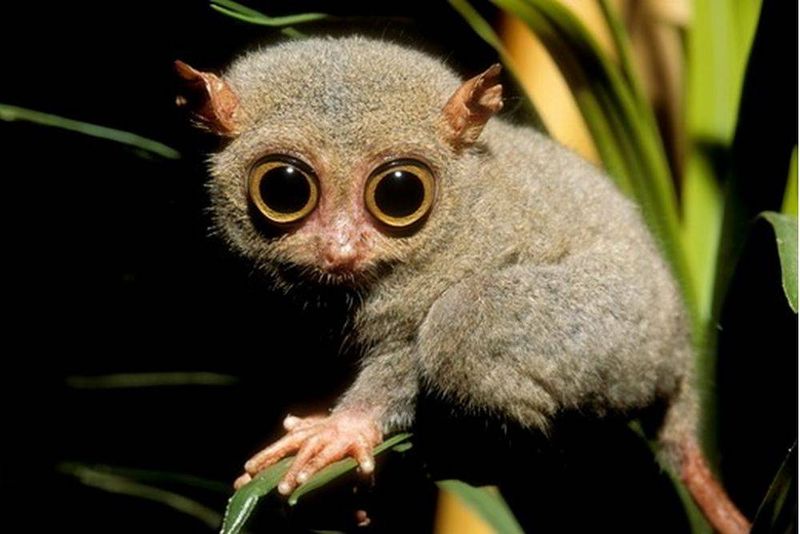
With eyes as large as its brain, the tarsier’s gaze is unforgettable. Native to Southeast Asian forests, these nocturnal primates use their enormous eyes to navigate the darkness. Each eye is fixed in its skull, requiring the tarsier to swivel its head to see around. This gives them an owl-like appearance, adding to their mystique. Their eyes are adapted for night hunting, reflecting a deep, eerie glow. Despite their small size, tarsiers exhibit a fierce predatory nature. With a leap that defies gravity, they silently hunt insects. Their eyes are a testament to nature’s eccentricity.
Stargazer Fish
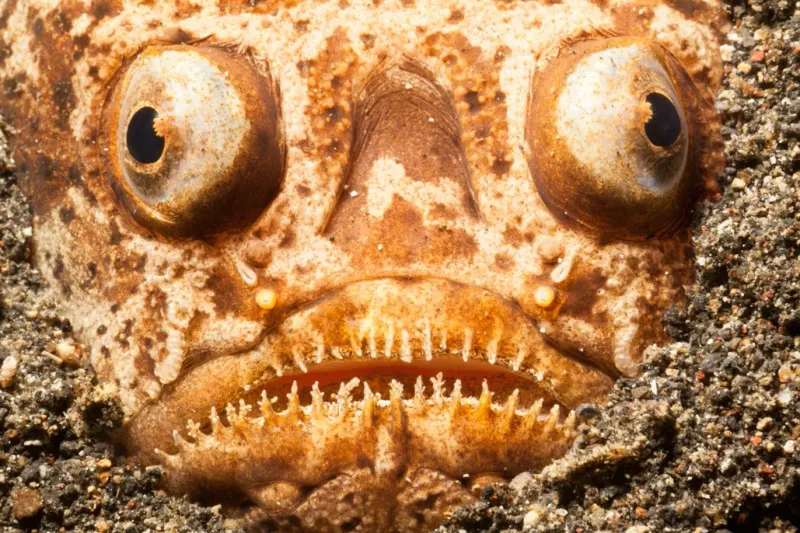
Sinister and stealthy, the stargazer fish lurks beneath the ocean’s surface. Buried in sand, only its eyes protrude, staring menacingly upwards. This unique positioning allows it to ambush prey with deadly precision. Its eyes are not just haunting but instrumental, serving as perfect tools for its predatory lifestyle. The stargazer’s eyes are positioned on top of its head, giving it an unsettling appearance. Fishermen and divers often recount eerie encounters with this fish. It’s a reminder of the ocean’s hidden mysteries. The stargazer’s eyes are both its weapon and its shield.
Owl

Owls have long been symbols of wisdom, but their eyes are truly haunting. Bright and large, they dominate the face, providing exceptional night vision. These eyes glow eerily under moonlight, making them formidable nocturnal hunters. With forward-facing eyes, owls have excellent depth perception. Their eyes are immobile, so they rotate their heads to see around. This ability, combined with their silent flight, makes them perfect hunters. Owls’ eyes captivate and mesmerize anyone who encounters them. Through literature and folklore, they’ve been portrayed as mysterious creatures. Their eyes hold secrets of the dark.
Gharial
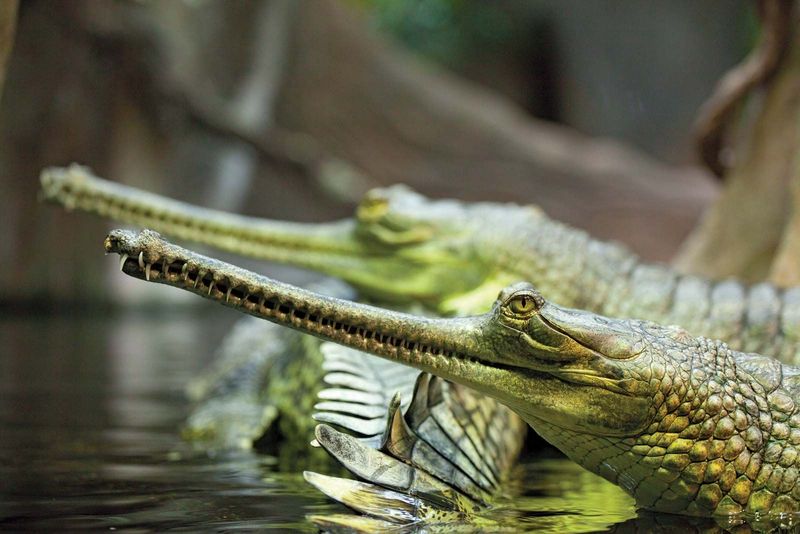
The gharial, a crocodilian species, possesses eyes that betray its prehistoric lineage. Resting by India’s rivers, its piercing gaze watches over its domain. These eyes, small yet intense, contrast with its long, slender snout. Adapted for aquatic life, the gharial’s eyes are positioned atop its head, allowing it to hunt while submerged. Witnessing a gharial’s eyes glisten in rippling water is an unforgettable sight. Although their numbers are dwindling, they remain majestic. Their eyes echo tales of ancient rivers and forgotten times. The gharial’s gaze is both a warning and a wonder.
Red-eyed Tree Frog

Vivid and striking, the red-eyed tree frog’s eyes are nature’s artwork. Hailing from Central and South America’s rainforests, their eyes serve both as camouflage and defense. When threatened, these frogs open their eyes wide, startling predators with sudden splashes of red. At night, their eyes glow like rubies, guiding them through the foliage. Their bulging eyes are not only beautiful but essential for survival. Though small, they symbolize the vibrant life of the rainforest. With a leap, they disappear into the greenery. Their eyes remind us of nature’s vibrant palette and creativity.
Goat
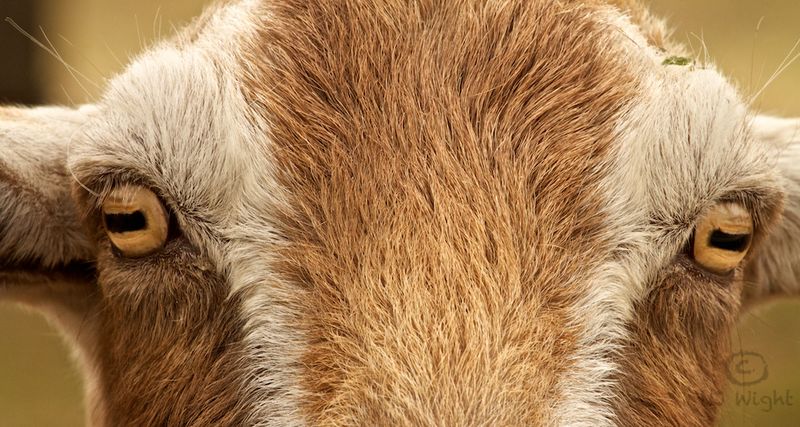
Goats, often playful and curious, have eyes that are uniquely disconcerting. Their rectangular pupils allow wide field vision, essential for detecting predators. This unusual shape gives their eyes an alien-like appearance, captivating yet unnerving. Found on rugged terrains worldwide, goats use their exceptional eyesight to navigate tricky landscapes. Their eyes adjust quickly to different light levels, showcasing nature’s adaptability. While their antics amuse, their gaze is penetrating. It’s as if they peer into your soul. Their eyes reflect resilience and survival. Goats’ eyes remind us of the unexpected in the familiar.
Chameleon
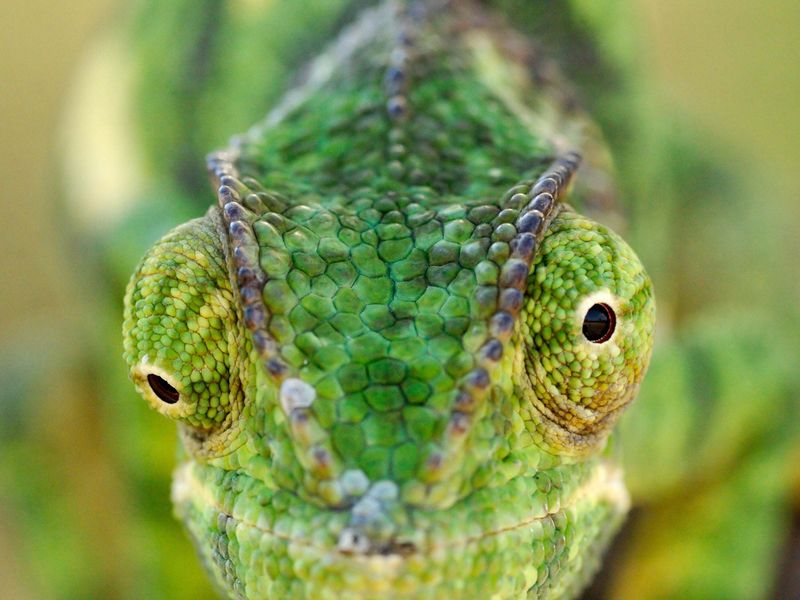
Chameleons are the masters of disguise, and their eyes are part of the act. Capable of moving independently, each eye scans its surroundings, embodying the chameleon’s mysterious nature. Found primarily in Africa and Madagascar, their eyes are essential for survival in diverse habitats. With a 360-degree view, they catch prey with incredible accuracy. Their eyes are a wonder of adaptation and evolution. Changing colors to blend in, they evade predators. The chameleon’s eyes teach us about nature’s ingenuity. Their gaze is enchanting, drawing us into their hidden world of color and camouflage.
Wolf Fish
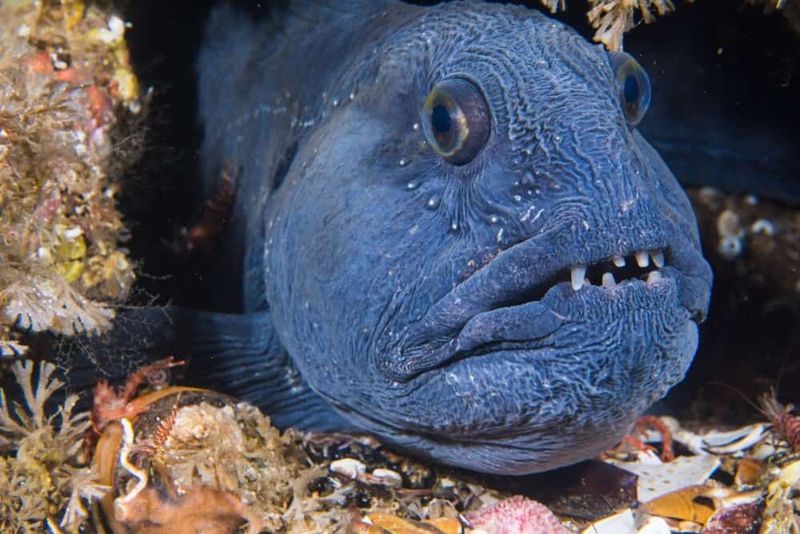
The wolf fish’s eyes are as intimidating as its name suggests. This deep-sea predator, known for its fearsome teeth, uses its large, unblinking eyes to navigate the darkness. With a fixed glare, these eyes exude coldness, matching its predatory instincts. Found in cold Atlantic waters, they hunt with stealth. Their eyes are vital for detecting movement in murky depths. The wolf fish’s appearance, particularly its eyes, has inspired tales of sea monsters. They represent the raw, untamed aspect of the ocean. Its eyes are windows to the abyss, both intriguing and terrifying.
Aye-aye
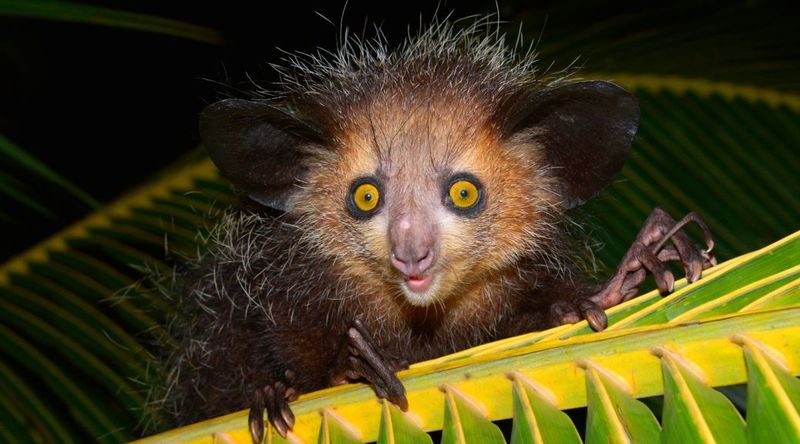
The aye-aye, with its peculiar features, is one of Madagascar’s enigmatic creatures. Its large, round eyes are adapted for nighttime foraging, giving it a ghostly appearance. Known for its long, bony finger used to extract insects, the aye-aye’s entire look is a fascinating oddity. Their eyes, glowing softly in the night, are crucial for survival in dense forests. They scan shadows for movement, revealing prey. Despite local myths portraying them as omens, aye-ayes are essential to their ecosystem. Their eyes tell stories of survival and adaptation. An encounter leaves an indelible impression.
Horseshoe Crab
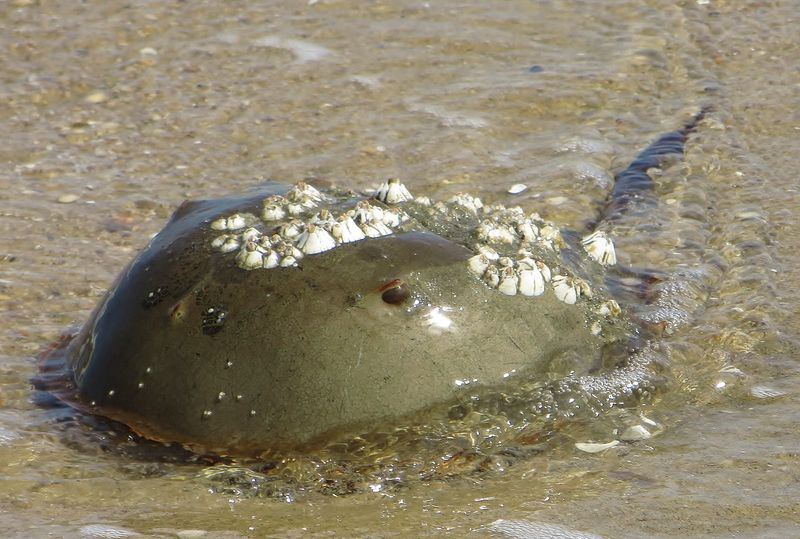
Ancient and mysterious, the horseshoe crab’s eyes are a marvel of evolution. Positioned atop its shell, these compound eyes detect ultraviolet light, guiding it through ocean tides. Though small, their eyes are vital for survival, adapting over millions of years. Found along America’s Atlantic coast, they play a crucial role in marine ecosystems. Their eyes set them apart from other marine creatures, symbolizing resilience. Their presence has inspired scientific research, uncovering secrets of vision. The horseshoe crab’s eyes bridge ancient past and present, standing as a testament to life’s enduring journey.
Cuttlefish

Cuttlefish, nature’s underwater artists, possess eyes as mesmerizing as their color-changing skin. Their W-shaped pupils are uniquely adapted for seeing in low light. Found in oceans worldwide, cuttlefish use their eyes to hunt and evade predators. These eyes detect polarized light, an ability rare among animals. Their gaze is as shifting as their colors, revealing an intelligence that intrigues scientists. Through their eyes, cuttlefish orchestrate underwater displays that captivate. Their eyes tell tales of adaptability and creativity, weaving a narrative of survival. To behold a cuttlefish’s eyes is to witness the ocean’s artistry.
Gecko
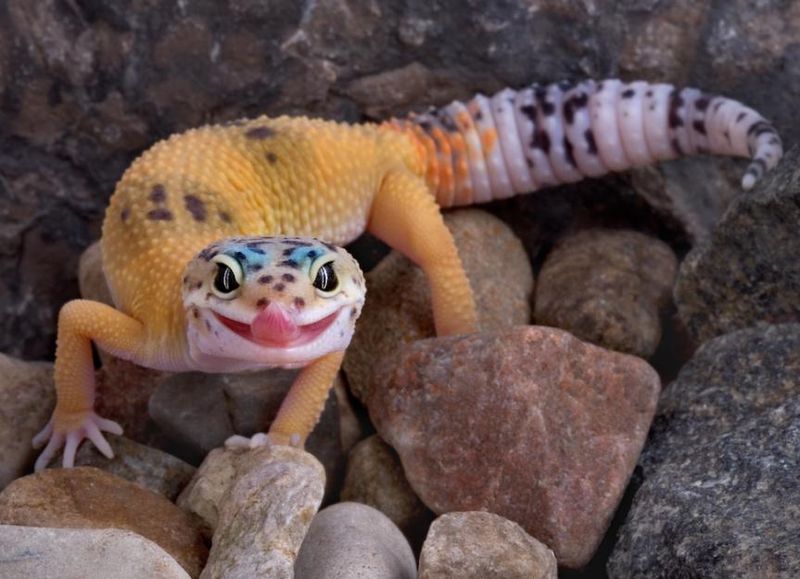
Geckos, with their sticky feet and lidless eyes, are masters of the night. Their large, unblinking eyes are equipped with vertical pupils, providing excellent night vision. This ability makes them effective hunters of insects in tropical regions. Geckos’ eyes are covered with a transparent scale, adding to their otherworldly charm. They clean their eyes with their tongues, a sight both fascinating and eerie. These eyes are symbols of adaptation, evolving to thrive in various environments. Geckos embody the mystery of the night, their eyes reflecting the secrets they keep. Their gaze is both captivating and strange.
Axolotl
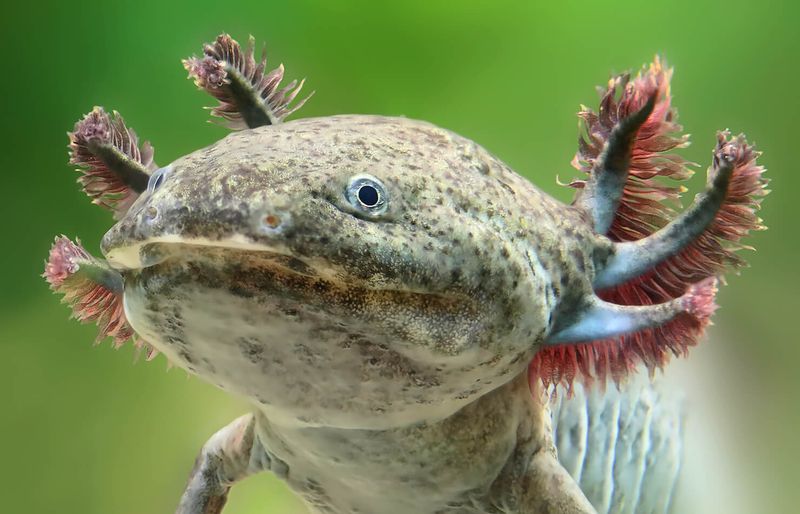
The axolotl, with its perpetual smile and frilly gills, has eyes that evoke curiosity. Native to Mexico’s lakes, their small, lidless eyes are an evolutionary marvel. Unlike other amphibians, axolotls retain their juvenile features, including these eyes, into adulthood. Their gaze is serene, almost inviting, as they glide through water. These eyes symbolize the axolotl’s unique regenerative abilities, allowing it to heal and regrow body parts. The axolotl’s eyes remind us of the wonders of evolution and adaptation. To observe them is to glimpse a world of perpetual youth and possibility.
Leaf-tailed Gecko
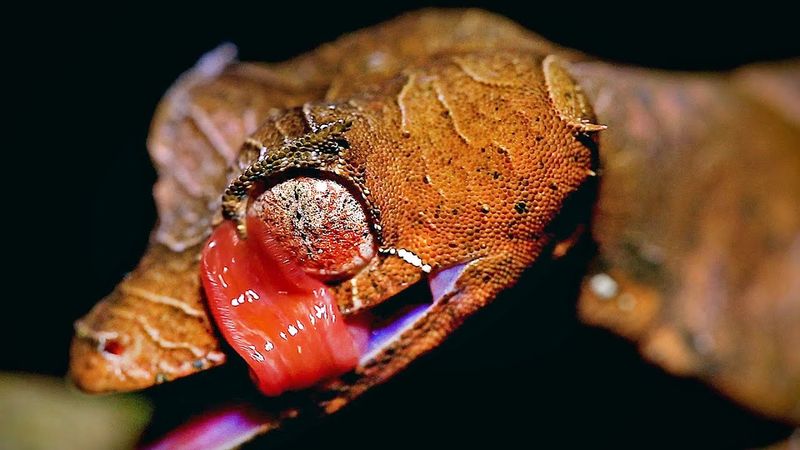
Masters of disguise, leaf-tailed geckos have eyes that complete their camouflage. Found in Madagascar, their eyes are designed to blend with their leafy surroundings. These eyes, with vertical pupils, enhance their night vision, crucial for hunting insects. Their ability to merge with the environment is unmatched, showcasing nature’s creativity. The gecko’s eyes, often the only sign of life, captivate those lucky enough to spot them. These eyes speak of survival strategies honed over millennia. Leaf-tailed geckos’ eyes symbolize the delicate balance of life in the wild. Their gaze is elusive and enchanting.
Viper
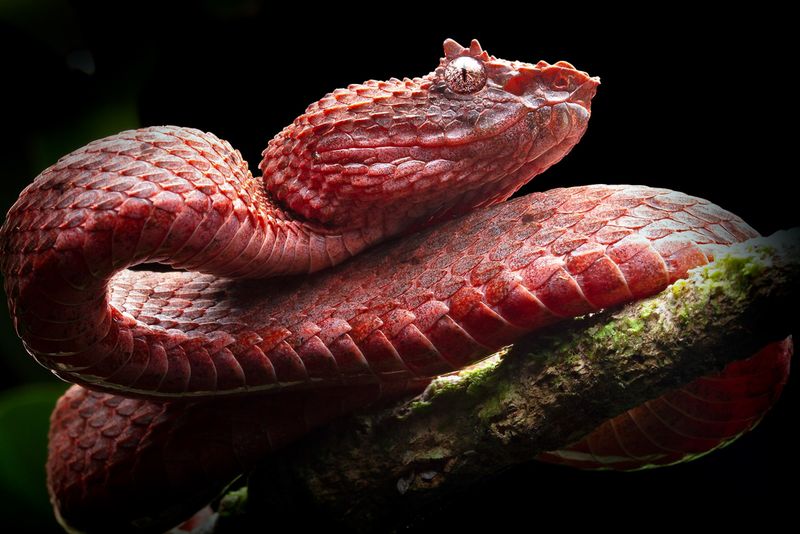
Vipers, with their venomous bite, possess eyes that instill fear. Their slit pupils are perfect for detecting movement, marking them as adept predators. Found in varied habitats, from jungles to deserts, vipers’ eyes are adapted for hunting in diverse conditions. Their gaze is both calculating and mesmerizing, reflecting their predatory nature. These eyes are windows to their lethal charm, warning of the danger they possess. Their presence in folklore as symbols of danger is well-earned. Vipers’ eyes remind us of nature’s raw power and beauty. Their gaze is a captivating dance of light and shadow.
Praying Mantis
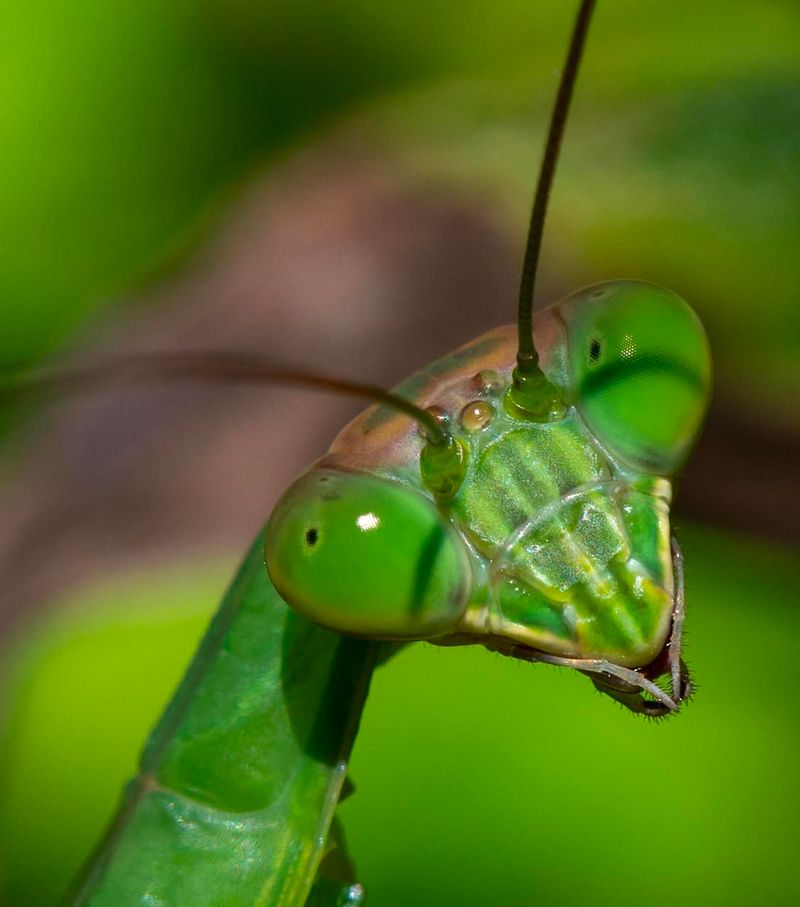
The praying mantis, with its prayer-like stance, has eyes that are both eerie and captivating. These compound eyes provide a wide field of vision, crucial for ambushing prey. Found in gardens and forests worldwide, mantises are skilled hunters. Their eyes are a marvel of evolution, offering depth perception for precise strikes. With a head that rotates 180 degrees, their gaze follows you intently. They inspire awe with their predatory prowess. The mantis’ eyes are symbols of patience and precision, reflecting nature’s calculated beauty. Observing them is a study in the art of hunting.
Colossal Squid
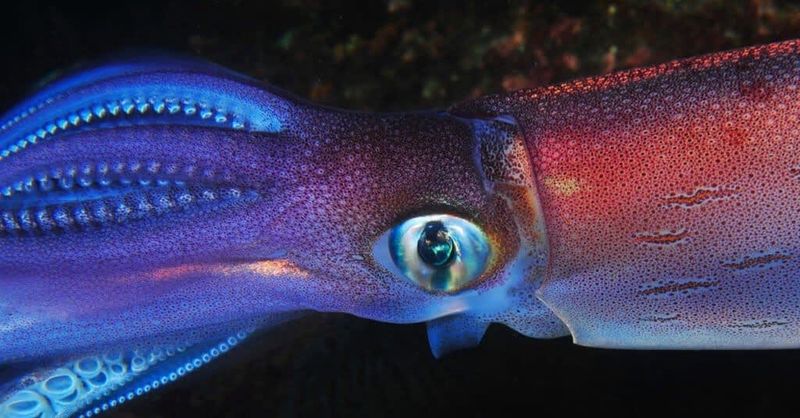
In the abyssal depths of the ocean, the colossal squid reigns with its unparalleled size and mystifying eyes. These creatures possess eyes that are the largest in the animal kingdom, reaching up to a staggering 11 inches in diameter. This adaptation allows them to detect the faintest glimmers of light in the murky abyss, spotting prey and predators alike.
Imagine a world where sunlight never penetrates, and survival hinges on every shadow. The squid’s eyes are a window to this world, reflecting the haunting beauty and isolation of the deep.
Curiously, scientists believe these eyes enable them to spot the bioluminescence of other sea creatures, crafting a spectral ballet in the ocean’s depths. Their eyes are as enigmatic as the ocean itself, inviting endless fascination and wonder.

